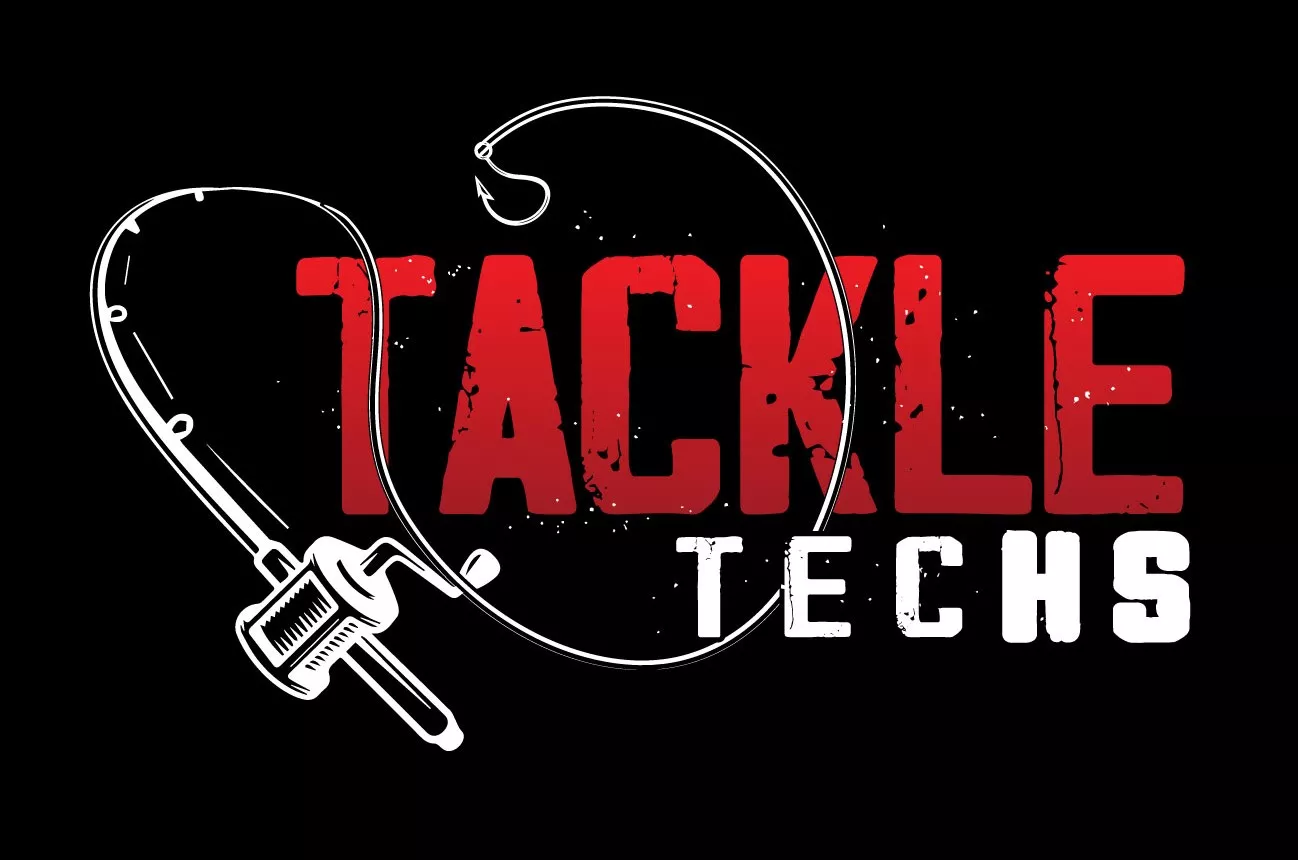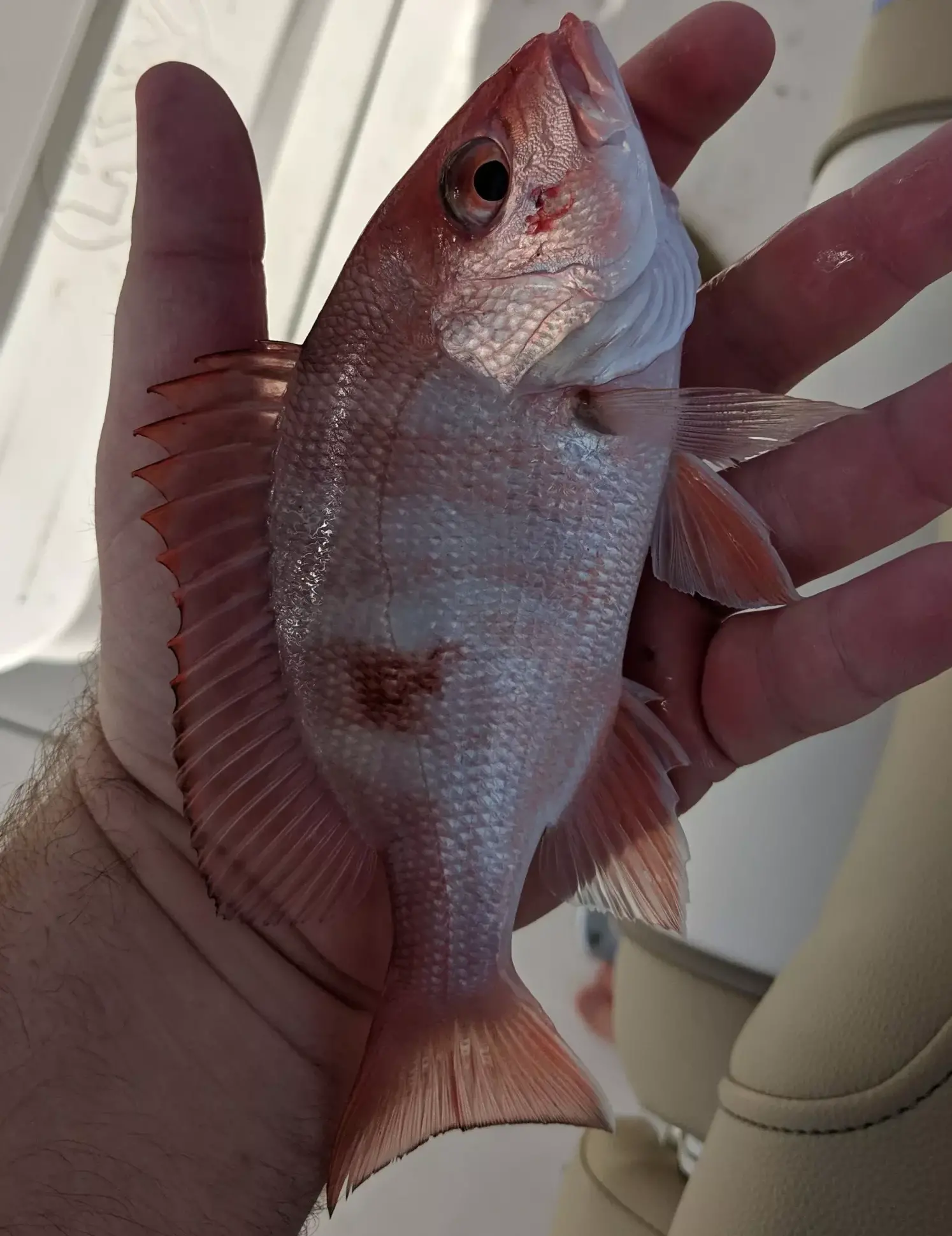Species Spotlight: Red Snapper
Today, in our Species Spotlight series, we’re diving deep into a species that’s always a thrill to catch and even better to eat – the mighty Red Snapper. If you’re as passionate as I am about fishing and enjoy trying new fish recipes, you’re in for a treat.
Throughout this article, we’re going to explore everything about Red Snapper – from their biology and preferred habitats to the best ways to catch them. We’ll also cover how to prepare them for a delectable dinner that will wow your family and friends.
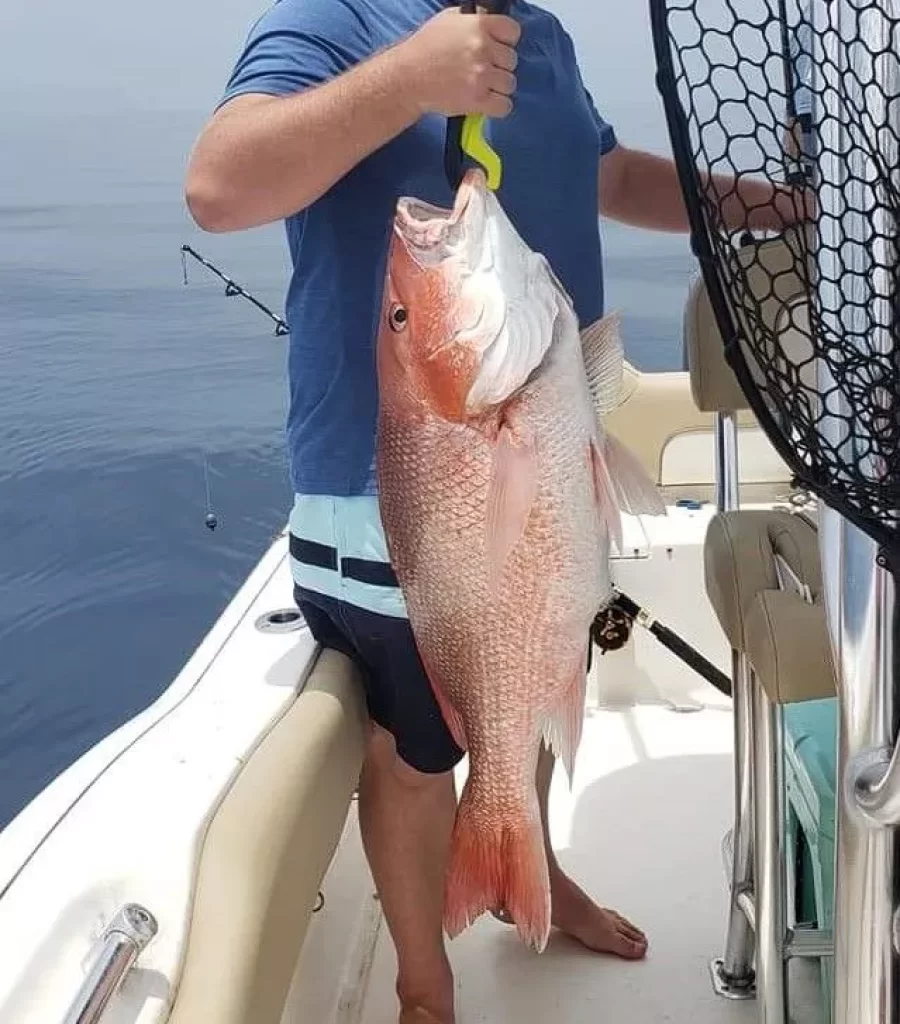
Table of Contents
About Red Snapper
The American Red Snapper, Northern Red Snapper, Lutjanus campechanus, or just Red Snapper stands out with its vibrant ruby-red scales and a fiery personality. Red snapper are one of the largest snapper species in the world and one of the most prevalent in their regions.
It has been the topic of many controversial conversations when it comes to conservation efforts. We will cover my opinion on this later in the article.
Physical Features
The red snapper, as its name implies, is bright red across most of its body, including the eyes. A broad muscular body and wide tail make it exceptionally strong and fun to catch. They have large scales and spiny fins and can grow to over 40 pounds.
They do have several sharp teeth and powerful jaws, so it is important to keep your fingers away from the mouth, as they can snap at incredible speeds. They also have razor sharp gill plates. Because of this, we recommend using lippers to handle them.
It is possible to confuse this fish for the hambone snapper, two fish that look amazingly alike. The easiest way to tell the difference is the eye color. Hambone snapper have yellow eyes, while red snapper have red eyes.
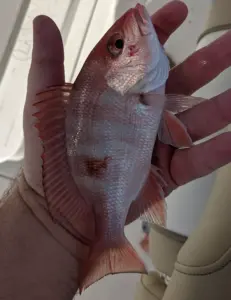
Juvenile red snapper will sometimes have a brown spot on their bodies, this is normal, but causes some people to confuse them for mutton snapper. This can be a costly mistake.
Where to Find Red Snapper
While red snapper can be found anywhere from Massachusetts to Brazil, they are most often found over rocks, reefs, ledges and wrecks in the gulf of Mexico and off the Atlantic coast of the southeast U.S..
While not necessarily a structurally oriented fish like grouper or some other snappers, they do tend to congregate over structures because they know that is the best place to find a meal, and these fish can eat.
Most often found in water between 50 and 200ft deep, but can be found anywhere from 10-300ft. If you are having trouble locating them, find large structures and start there. Consult your local charts to find local wrecks, rockpiles and county reefs.
If you are near Central Florida, check out our guide to Catching Red Snapper out of Ponce Inlet.
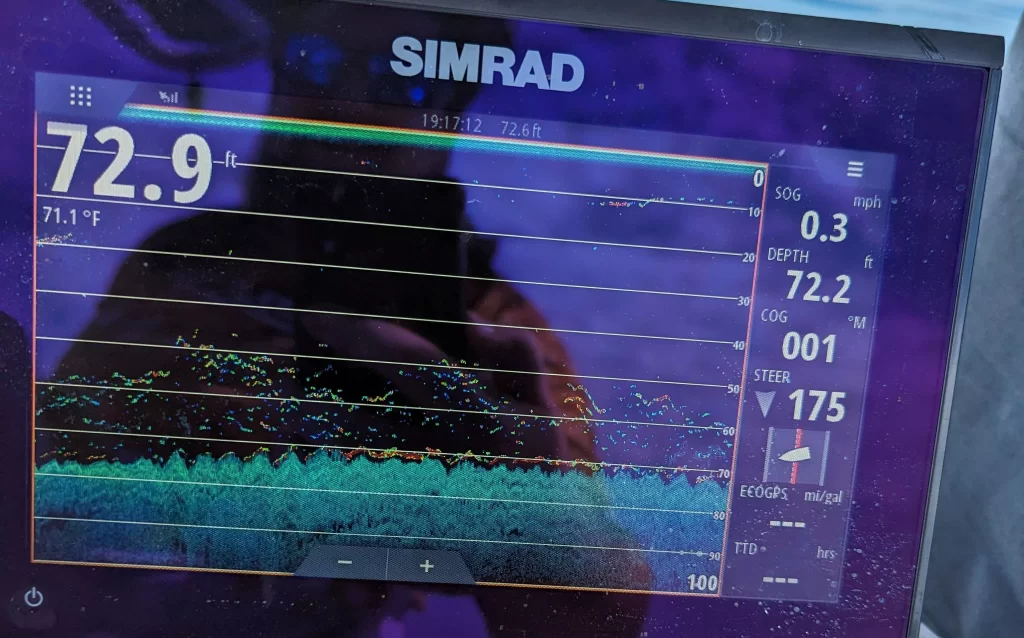
Red snapper will often suspend above structure rather than sitting on the bottom. They will show up on your depthfinder with red in their marks, that is their swim bladder. They can be mistaken for amberjacks, that look very similar on the screen and often share the same areas.
Diet
Red snapper have large appetites and are not usually picky about what they eat, especially when smaller. They will most often eat crabs and other crustaceans as well as whatever fish they can get hold of, particularly sardines and grunts.
They can be caught on just about any sort of cut or live bait, but most often on squid or sardines. They have even been caught on chicken wings.
How to Catch Red Snapper
There are many ways to catch red snapper, from bottom fishing to trolling. They have even been caught on topwater! Here we will explore a few different methods to help you boat one of these beautiful and delicious fish. No matter how you do it, red snapper fishing can be a fun and rewarding experience.
Source: Unfathomed Fishing
Bottom Fishing
By far the most common way of catching them is bottom fishing. Simply anchor over or slightly up current from structure, tie on a fishfinder rig or knocker rig with just about any type of frozen or live bait and send it down.
Once your bait reaches the bottom, reel in 4-6 handle cranks worth of line and wait for the bite.
Pro Tip: Wedge the butt of the rod under your armpit and relax your arm. As the boat moves up and down, try to keep the rod from also going up and down. The movement makes the bait look unnatural.
My favorite red snapper bait for bottom fishing are live grunts. They are plentiful, easy to catch and resilient. I recommend using a pair of scissors to snip off all of the spines to make it easier for the snapper to eat.
Other excellent baits include frozen herring or sardines and squid. If you are lucky enough to get a fresh bonita on the way out, they make great cut bait as well.
How to Tie a Fishfinder Rig
Tying a fishfinder rig is very simple, you will ned:
- 4oz Egg Sinker
- Circle Hook
- Barrel Swivel
- Bead
- Leader
Start by sliding the egg sinker up your main line, followed by a bead. Tie the end of that line to a barrel swivel.
Next, tie the end of your leader to the other end of the barrel swivel, and then tie on your hook. You now have a completed fishfinder rig ready to go.
Drifting
Another popular method is drifting. This works best on days that don’t have a lot of wind or current that makes it difficult to keep your bait moving naturally.
The ideal difting setup is a main line that runs to a 3 way swivel. Off the bottom of the 3 way, attach ~2 feet of line that goes to a bank sinker, 2-3oz should work though you may need to adjust for current and depth. From the other end of the swivel, attach about 20 feet of leader line and tie a circle hook to the end of that.
The long leader is to keep the bait moving through the water as naturally as possible, but this does mean you will need to pull in the last bit of line by hand.
Speaking of bait, I prefer cut strips of bait for this or whole frozen fish with the tail removed. It is possible to used bridled live baits, and they are very effective, but can cause more trouble than they are worth.
Position your boat upcurrent of a large area of live bottom or other area with structure that you want to cover and let the current take you.
As the boat drifts, periodically let line out to make contact with the bottom again and continue until you get hit. It should not take long.
Jigging
Jigging, particularly slow pitch jigging, has gained a lot of popularity in the last few years, and for good reason. It’s a cleaner more engaging way of fishing that feels like fishing for 20lb bass.
There is a ton of different gear and techniques involved in this way of fishing, and if you are interest you can read our guide on slow pitch jigging.
Trolling
Believe it or not, red snapper can be caught while trolling. Catching them this way requires a downrigger, but can be quite effective.
Lower the downrigger ball to about 15-20ft off the bottom and use a trolling spoon. Drive in a slow zigzag pattern over live bottom areas with the boat just bumped into gear.
Handling and Cleaning
It is important to note that these fish can do some damage if not handled properly, they are covered in sharp spikes and have very strong jaws with sharp teeth. They also have razor sharp gill plates that you should absolutely keep your fingers away from.
I recommend using a pair of lippers to lift them from the water. This makes them much easier and safer to handle while you de-hook and(if out of season) vent for release. It also keeps the fish from touching the floor of the boat which helps its survival rate after release.
If you are going to keep the fish, make sure you are caught up on the current regulations as they change from year to year(more on this in the conservation section of this article), then club the fish or pierce its brain with a knife and put it on ice. This way the meat stays as fresh and clean as possible.
Culinary Corner
Recipe: Blackened Red Snapper with Creamy Risotto and Asparagus
This luxurious dish combines the rich flavors of blackened snapper, creamy risotto, and crisp asparagus for a truly unforgettable meal. Let’s dive into how to make it!

Ingredients
For the Blackened Snapper:
- 2 snapper fillets
- 2 tablespoons blackening seasoning
- 2 tablespoons olive oil
For the Creamy Risotto:
- 1 cup Arborio rice
- 4 cups chicken stock
- 1 small onion, finely chopped
- 2 cloves garlic, minced
- 1/2 cup dry white wine
- 1/2 cup Parmesan cheese, grated
- 2 tablespoons unsalted butter
- Salt and pepper to taste
For the Asparagus:
- 1 bunch asparagus, ends trimmed
- 2 tablespoons olive oil
- Salt and pepper to taste
Instructions
For the Blackened Snapper:
- Season the snapper fillets on both sides with the blackening seasoning.
- Heat the olive oil in a skillet over medium-high heat. Add the fillets, and cook for 3-4 minutes. Flip the fillets and cook for an additional 2-3 minutes, or until cooked through. Remove from heat and set aside.
For the Creamy Risotto:
- In a saucepan, bring the chicken stock to a simmer.
- In a separate, large saucepan, melt the butter over medium heat. Add the onion and garlic and sauté until translucent.
- Add the Arborio rice to the saucepan and stir to coat the grains in the butter. Cook for a minute or two until the edges of the grains become translucent.
- Pour in the wine and stir until it is fully absorbed by the rice.
- Start adding the simmering chicken stock, one ladle at a time, stirring continuously. Wait until each ladle of stock has been absorbed before adding the next.
- Continue this process until the rice is al dente and creamy. This should take about 20 minutes. Stir in the Parmesan cheese and season with salt and pepper to taste.
For the Asparagus:
- Preheat your oven to 400°F (200°C).
- Arrange the asparagus on a baking sheet and drizzle with olive oil. Season with salt and pepper, then toss to coat.
- Roast in the preheated oven for about 10-15 minutes, or until tender and slightly charred.
Serve the blackened snapper atop the creamy risotto, with the roasted asparagus on the side. This balanced meal boasts a beautiful blend of flavors, with the spicy snapper complementing the creamy risotto and the crisp, roasted asparagus adding a nice crunch. Enjoy!
Conservation
The management and conservation of Red Snapper have not been without controversy.
The allocation of catch quotas between commercial and recreational sectors has been a heated point of contention. Commercial fishermen argue that their livelihoods depend on the Red Snapper catch, while recreational anglers insist on their right to enjoy the sport and bring home a healthy, delicious catch. This ongoing debate has complicated regulatory efforts and caused some friction among stakeholders.
There’s also considerable disagreement about the current status of the Red Snapper population. Some believe that conservation measures have been effective and that Red Snapper numbers are on the rise. Others argue that the population remains fragile, and that rigorous restrictions should remain in place to allow for further recovery.
In my personal opinion, the effort was originally started with good intentions, but it has become clear that there needs to be more granular sectioning of restrictions. Anyone who has fished offshore in northeast florida can tell you that the red snapper has made a miraculous recovery and has actually become a nuisance.
However, if you travel south to Miami for instance, there is a lot less area for them to thrive in and just as much pressure. I would like to see the Atlantic sectioned off with more lenient restrictions from Cocoa Beach to the north and implement a slot size of something like 20″-34″. This would allow for better culling of the excess fish while leaving young fish and the big breeders.
Did I miss anything? Let me know by commenting below
